Syracuse University
US Energy Consumption
Here are a few notes on US energy consumption since World War II. The underlying data was obtained from the US Energy Information Agency.
Total Consumption
Total US energy consumption (measured in quadrillion BTU) grew rapidly until the oil price shocks at the end of 1973 and 1979. Consumption was fairly stable until the late 1980's. Since then it has been growing, although at a lower rate than in the years prior to 1973.
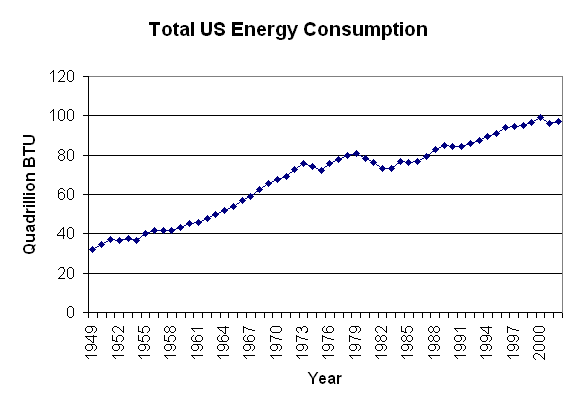
Energy consumption has been growing more slowly than real GDP. The graph below shows US energy consumption per 1996 dollar of GDP.
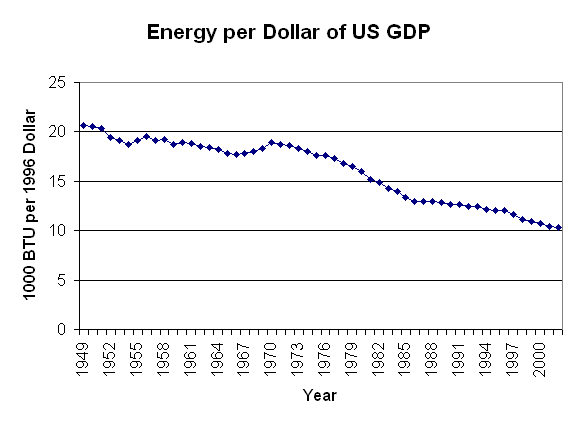
Consumption by End Use
US energy consumption by end use is shown below for the post-war period. Growth in all uses was rapid until the first oil price shock in 1973. After that, residential, commercial and transportation energy use has grown more slowly and industrial energy use has remained essentially constant.
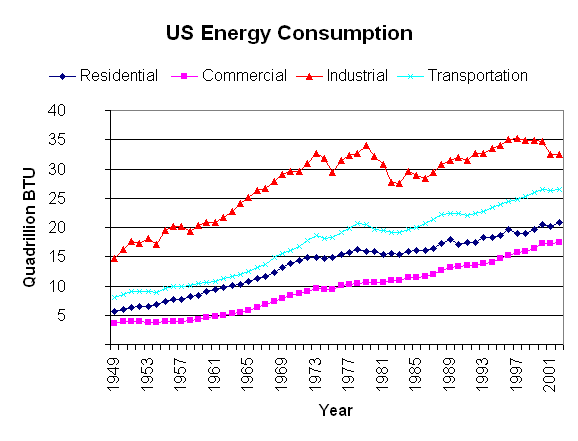
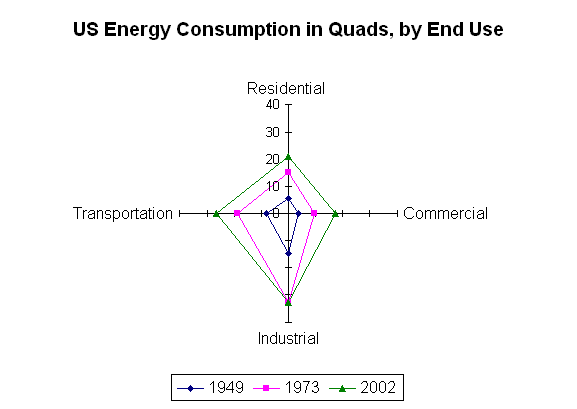
Growth Rates
Between 1973 and 2002, total energy consumption grew at an average annual rate of 0.9%. Growth was slow during the first half of the period and has been more rapid recently: the annual average growth between 1987 and 2002 was 1.4%. Average annual rates of growth by end use are shown below for the two periods.
| End Use | 1973-2002 | 1987-2002 |
| Residential | 1.2% | 1.7% |
| Commercial | 2.1% | 2.5% |
| Industrial | 0.0% | 0.7% |
| Transportation | 1.2% | 1.4% |
Prices Matter
An important lesson from history is that energy prices matter a lot. Before 1973, US energy consumption appeared to be growing exponentially at a rate of 3.2% per year. An exponential growth curve fit the data superbly well: in statistical terms, the R2 was 0.976 and the standard error of the estimated growth rate was 0.1%. Together those statistics imply that energy growth should have been between 3% and 3.4% for many years to come. However, that turned out to be very, very wrong. The graph below compares the exponential forecast (based on data from 1947-1973) with what actually happened. The exponential model predicted 88 quads more energy consumption in 2003 than there actually was, an error of 89% (186 quads predicted vs. 98 quads of actual consumption).
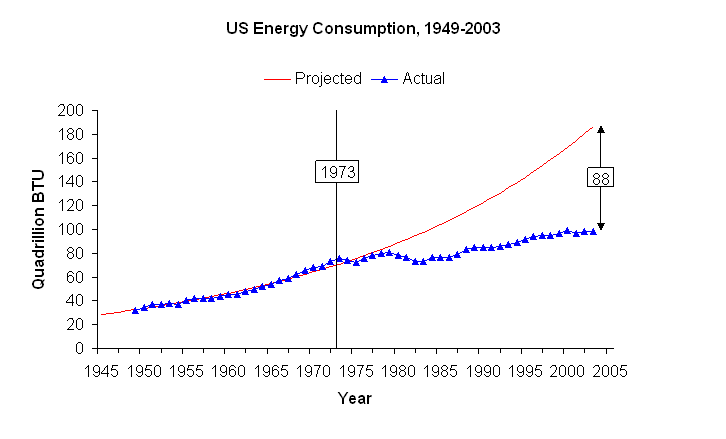
The simple exponential growth model looked good during the period before 1973 because energy prices were low and relatively stable. When prices rose sharply, demand dropped as energy users (especially in industry) began conserving energy.
URL: https://wilcoxen.maxwell.insightworks.com/pages/804.html
Peter J Wilcoxen, The Maxwell School, Syracuse University
Revised 04/10/2006
